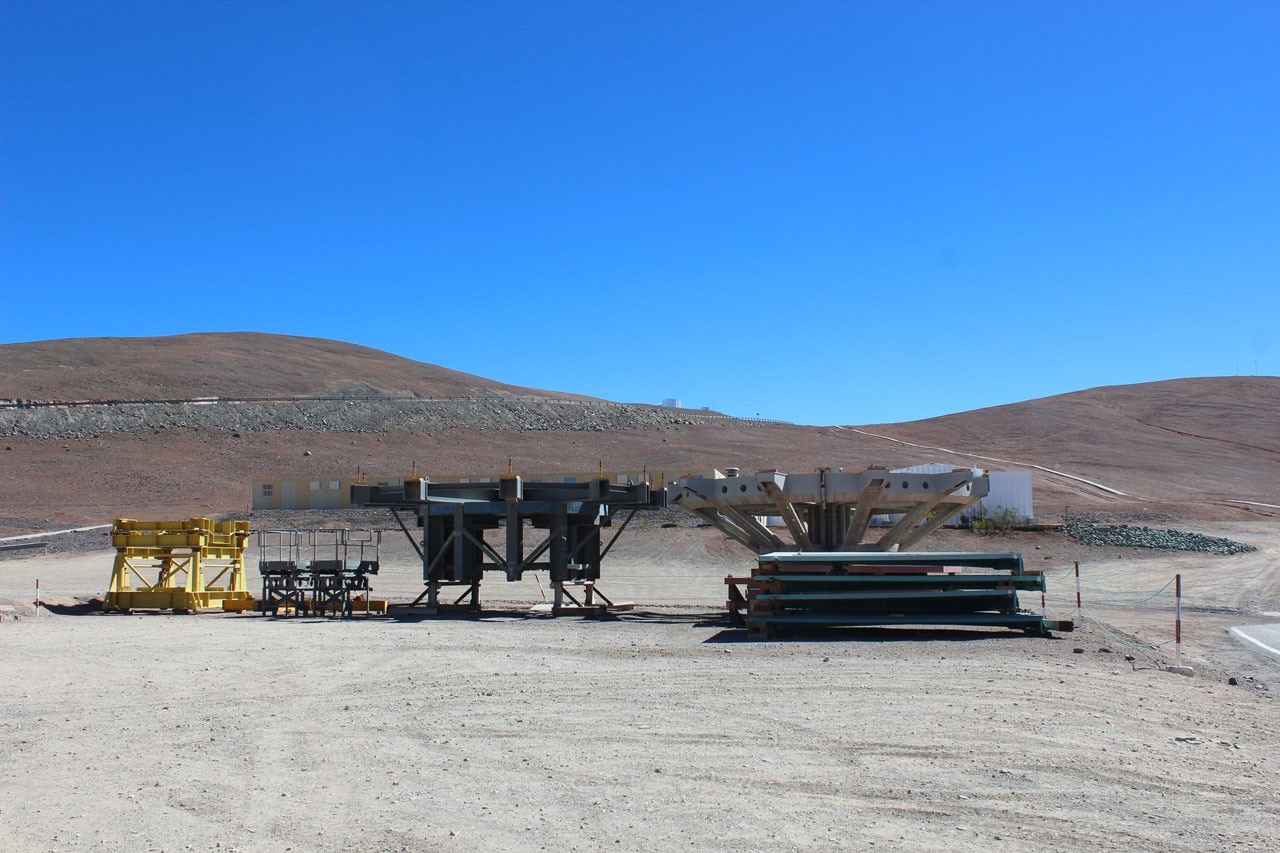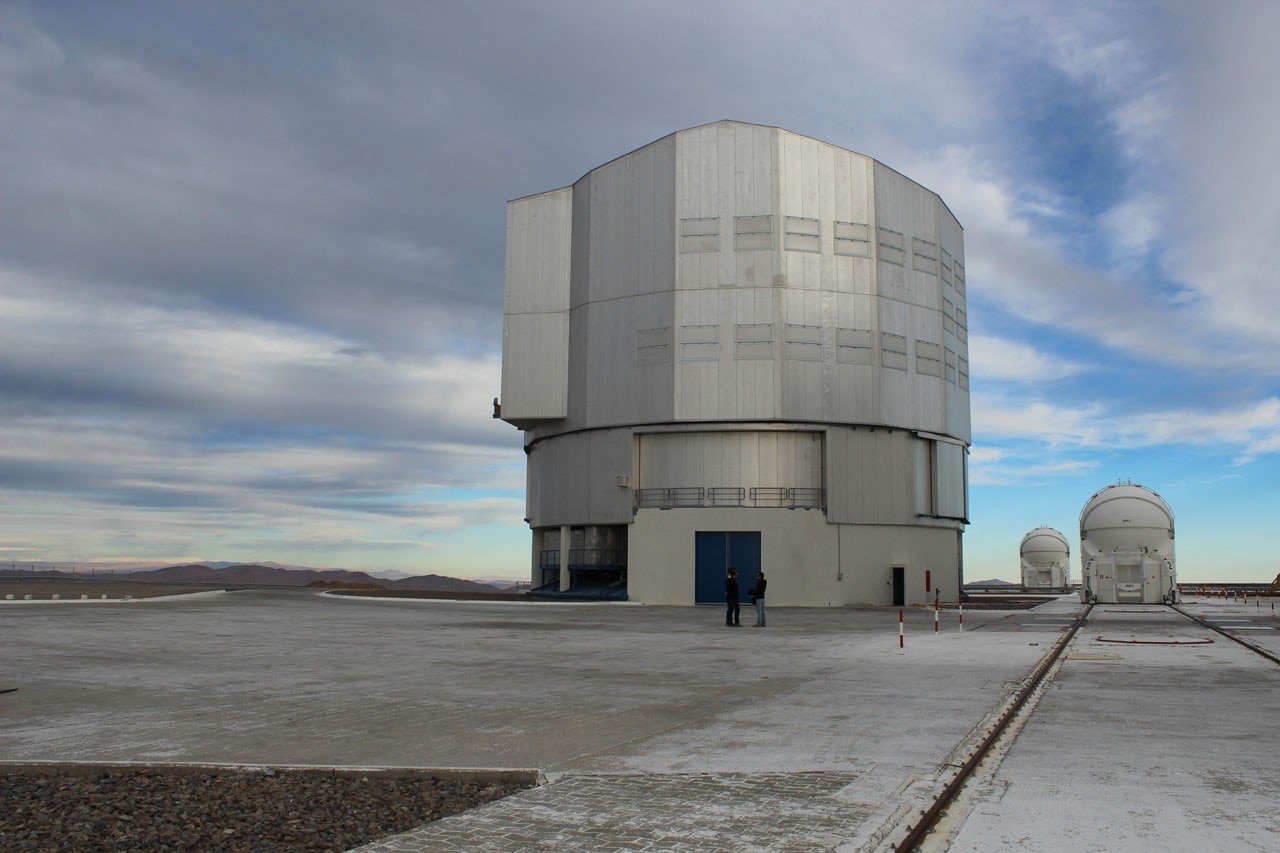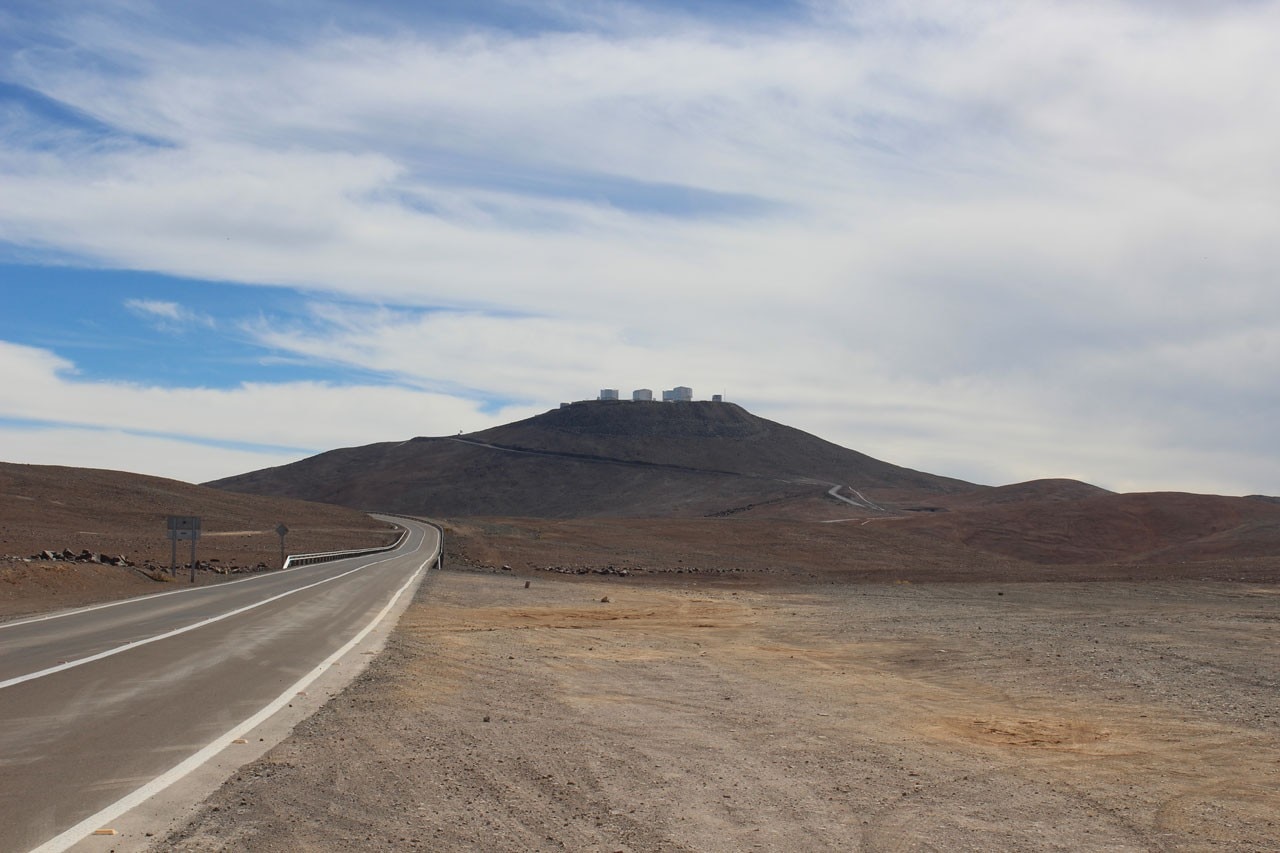
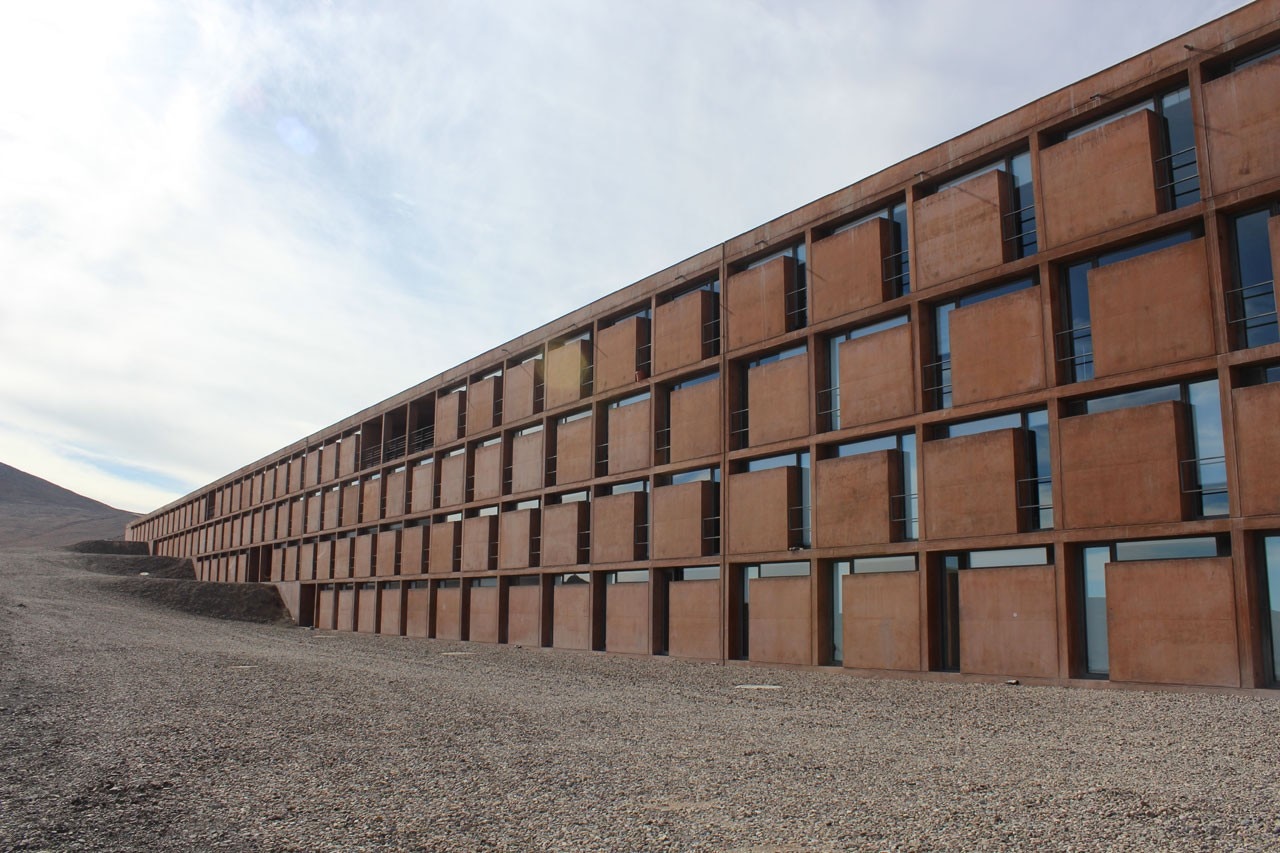
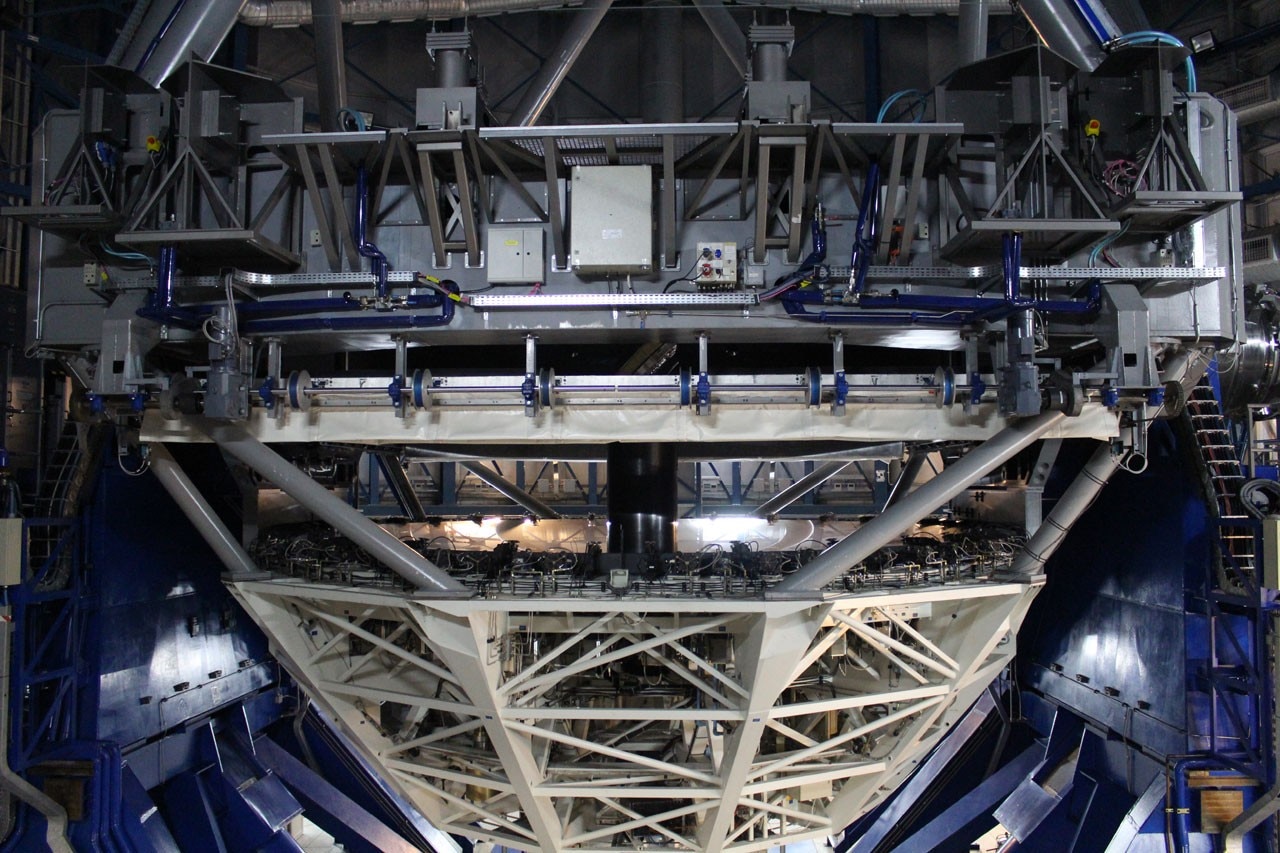
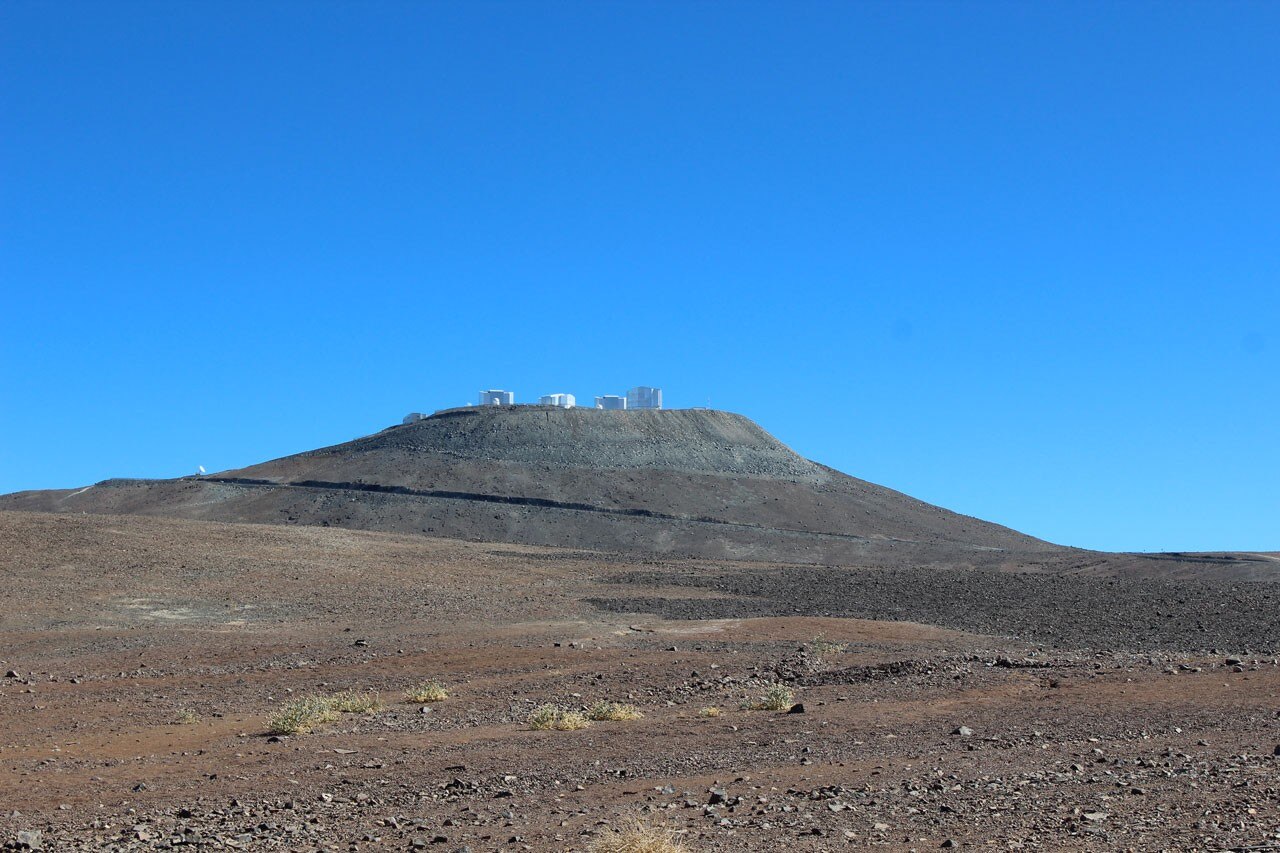
For one thing, the romanticised image of an eighteenth or nineteenth-century would-be astronomer, setting up a telescope in the dark and spending long nights recording observations, is long since out of date. As is often the case with Big Science projects (e.g. the Large Hadron Collider), while the oft-publicised images of the VLT's technical machinery may be visually compelling, they tell too little of the story of the equally fascinating engineering technology which allows the telescopes to observe star and sky.
The 10 telescopes which comprise the VLT array have little need for human eyes. Every single night, some 20 Gigabytes of data are captured and downloaded by the telescope's optics – it would take many lifetimes to assess and analyse that much data. In fact, nearly every aspect of astronomical observation at the VLT is handled by a computer: the observations themselves, and regular maintenance of the telescopes, but also to optimise the scheduling of the selected observations to ensure that the telescopes work as much as possible, the observations themselves, and regular maintenance.
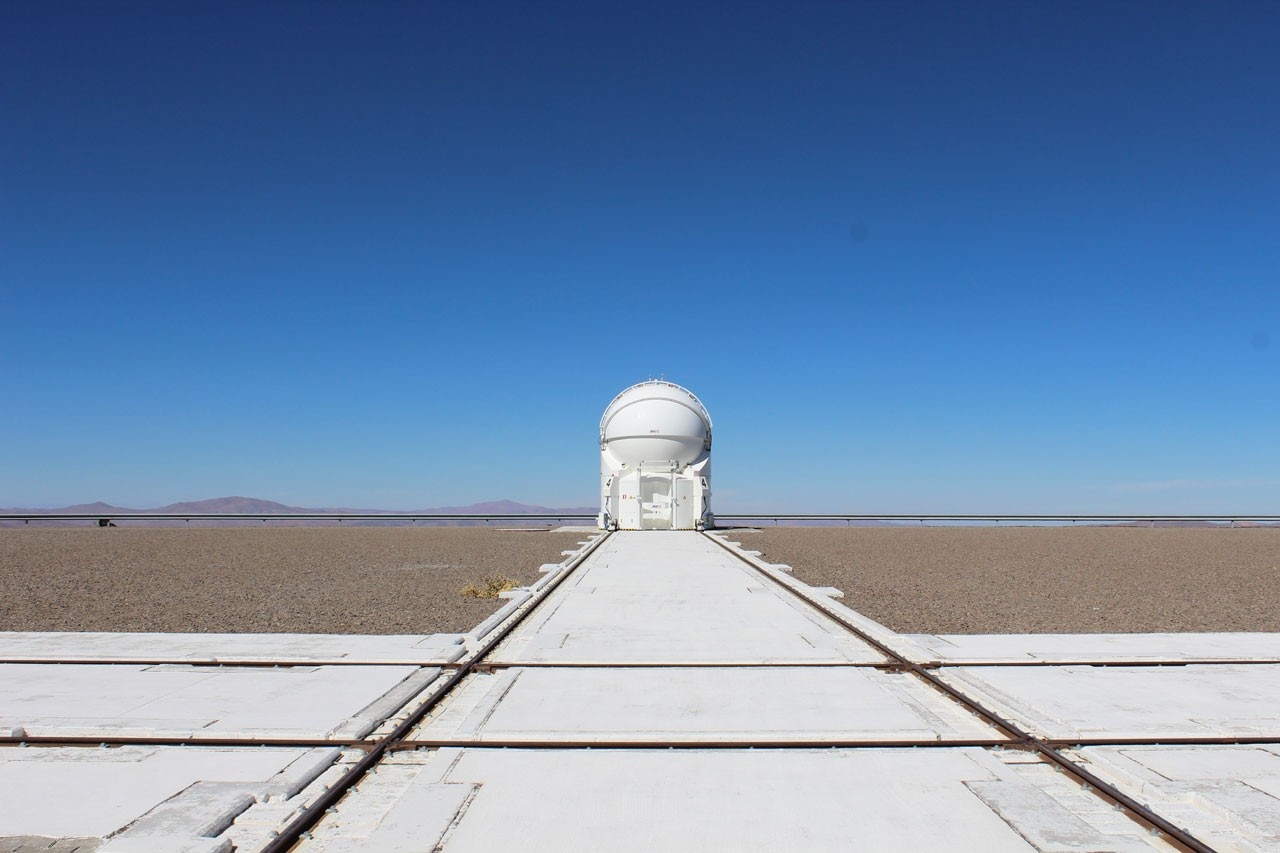

Given that the mirror flexes as the telescope moves, following the star as it rotates in the sky, an ingenious system has been devised to make regular corrections to the position of the mirror as it bends and moves. Each of the mirrors in the UT telescopes has active optics, a system of some 150 actuators which are both across the whole plate of the mirror and surrounding its edge. As the telescope rotates, the actuators adjust the mirror to help ensure clearer observation results.
Testament to the constant technological improvements being made at Paranal, UT4 – the workhorse of the observatory – has a state-of-the-art adaptive optics system. The actuators are still present, but react second-by-second to minute changes in the atmosphere – a ground-based telescope's worst enemy – detected by a laser projected into the sky from the centre of the telescope. This system of correction is so sophisticated that during observations you can see the second the adaptive correction kicks in – an observed star goes from slightly fuzzy to relatively crisp in the blink of an eye.
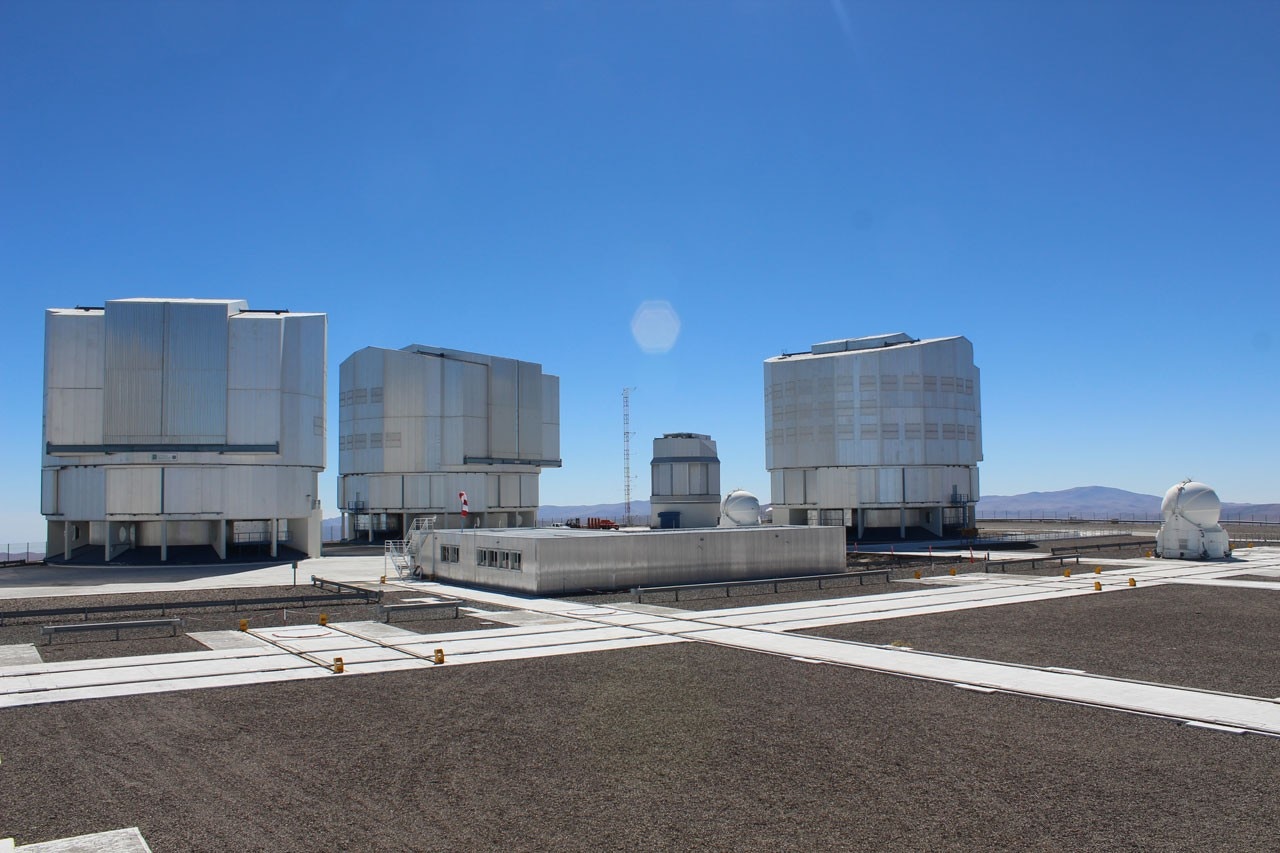
The notion of crispness, or relative clarity in astronomical observation is an intriguing one – I begin to suspect it lies at the heart of my attempt to understand the process of image making.
During my two-day visit to Paranal, I'm lucky enough to be in the main control room on the night of a “first light”, which is what astronomers call the first observation recorded by a new instrument. SPHERE, the name of the new instrument, was designed and funded by a French consortium specifically to hunt exoplanets. It's been a lengthy, 8-year process of fund-raising, designing, making, and finally installing at the VLT. There's lots of clapping and backslapping, someone opens a bottle of champagne. It's a surprisingly moving moment.
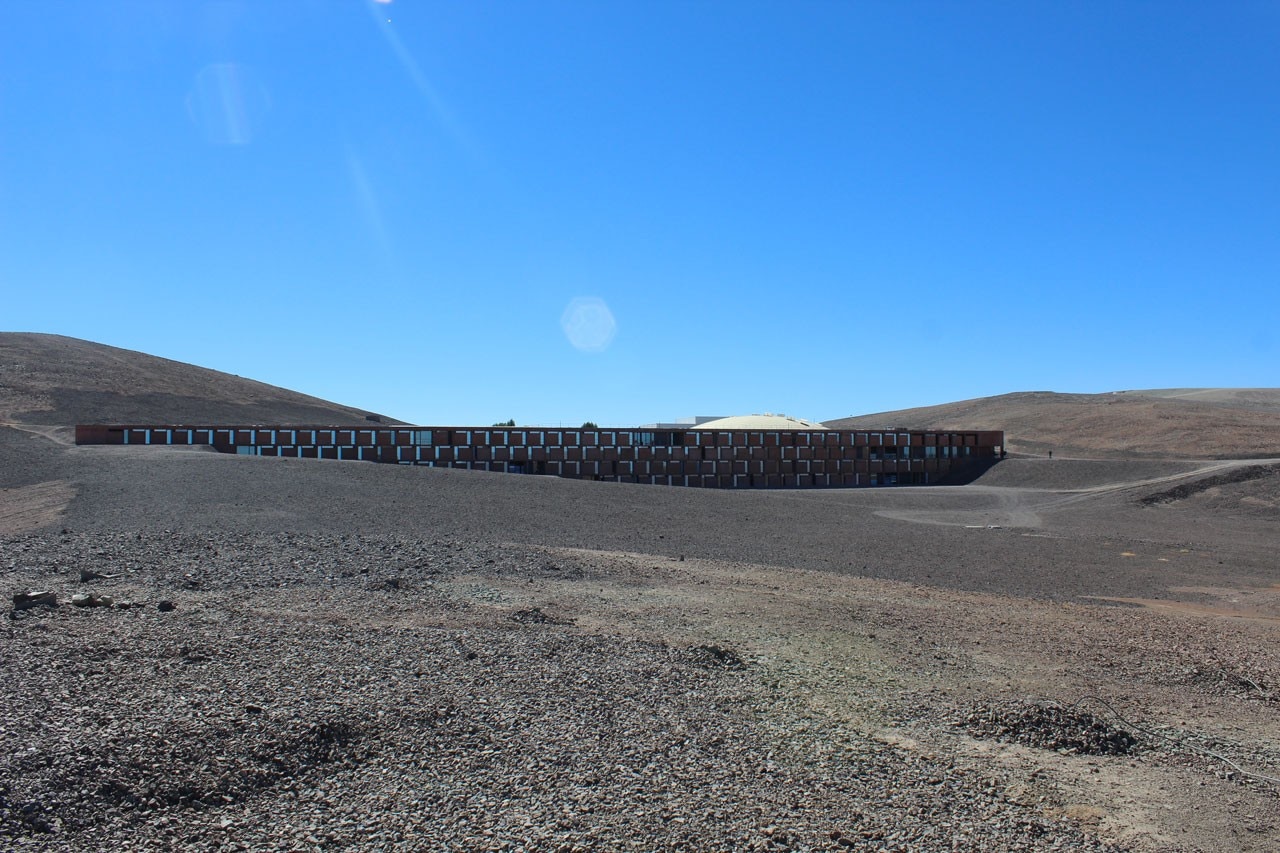
The next morning, I ask Juan Carlos Muñoz, an astronomer who works on UT3 to show me some of the very first images captured by the new instrument. Since it was SPHERE's first outing, Juan-Carlos explains, the instrument wasn't doing much more than pointing at a star to ensure that it could, in fact, accurately point. The image he pulls up onto the screen is a black rectangle, broken up by lots of white dots with two small, fuzzy orange, slightly larger, dots in the middle – it looks like the backdrop for an early Atari space-shooters game. Not at all like the astronomical images I'm used to seeing.
In the next bay over a friendly, young American postdoc called Grant, who specialises in clusters of galaxies, pulls up another image. It's a jagged graph, an orange line swinging up and down like a picture of mountains and valleys drawn by a child on a see-saw. It's a spectrograph of data, collected by UT2 – whose instruments are primarily geared towards spectroscopy. My hazy memories of doing spectroscopy in university Organic Chemistry classes gave results which in no way resembled this graph of pure data. I ask Grant to explain the meaning of the graph and he makes a valiant effort, but ultimately says that it isn't as easy as looking and decoding. It takes time and many hours of data comparison to unlock the mysteries of spectrographic data. Something Grant says, almost as a throwaway comment, sticks with me: “for an astronomer, especially a spectroscopist, there's just as much, if not more beauty in this graph, as there is in the pretty pictures distributed to the public.”

If the images from the pages of Popular Scientist don't come directly from the telescope's observations – which look more like 1980s video-game screenshots – where do they come from? Moreover, if they aren't especially useful for astronomers why are they made?
Essentially, it seems, the swirling colours of photographs of far-away nebulae are part of a highly successful public outreach project. Rather than the telescopes being cameras that take publishable pictures, the observational images are more like pure data – not especially useful for communicating the glories of astronomical wonders to a curious public. A last conversation with Juan Carlos and Francisco Rodríguez, from ESO's public outreach office (who has also been my excellent guide on-site), is particularly enlightening. It turns out that skilled designers in ESO's head office in Garching, Germany work with the original observational data, before adding colour or layering a number of images together to give an artistic impression of the universe, resulting in the spectacular, swirling images which are then distributed around the world.
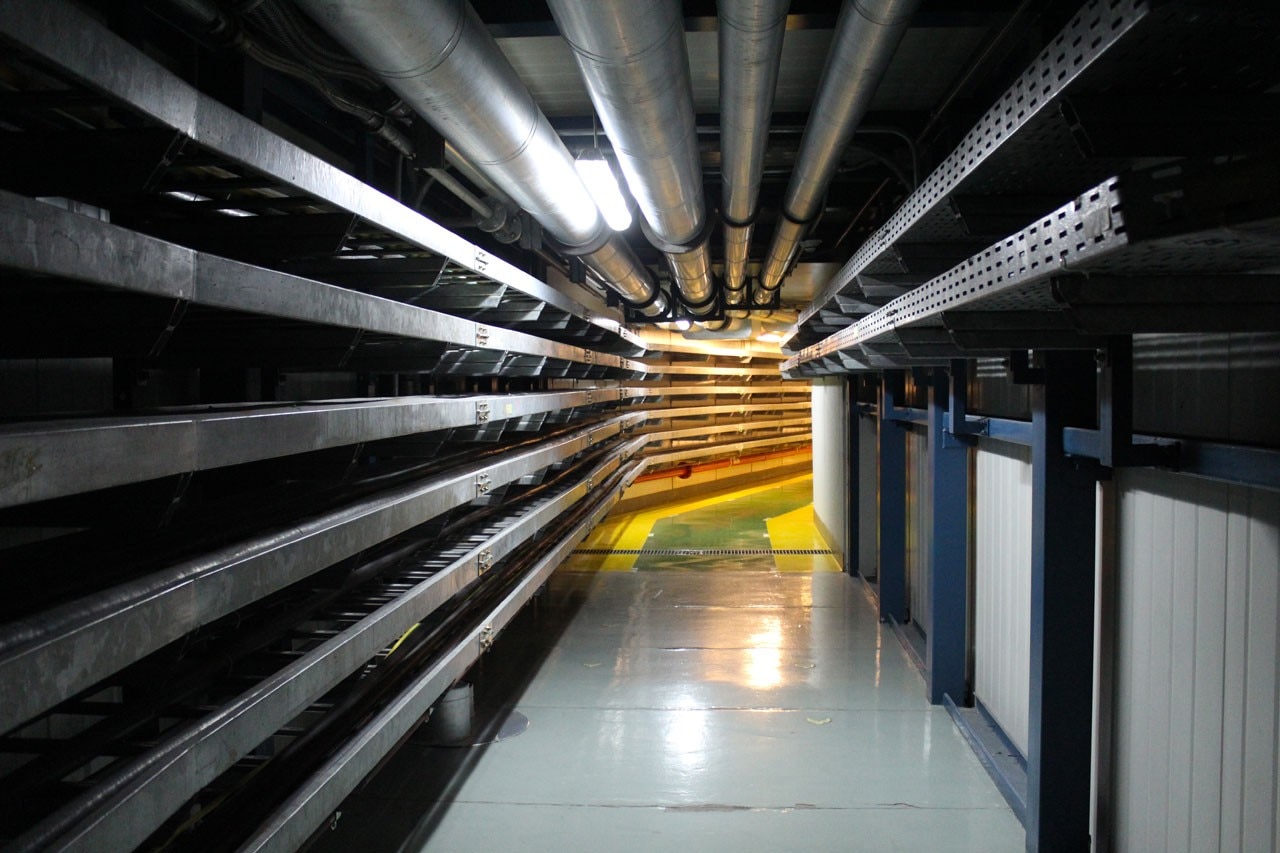
To sum up the lengthy, technical explanation given by Juan Carlos, the colours in those beautiful images don't necessarily appear as such in the sky, especially when the images are taken with infrared, or other instruments that measure light not visible to human eyes. In the latter cases, colour is used as a kind of shorthand: “It's mostly a matter of perception,” he says, philosophically. The fuchsia pink or reddish colours that appear in an image of a nebula are a kind of visual key signifying things such as temperature (bluer tones generally signify warmer temperatures, redder tones the opposite) or chemical composition (reddish colours may also indicate, for example, the presence of Hydrogen, as H-alpha's 656 nm wavelength is on the red end of the spectra). While I'm trying to decide whether this knowledge is disappointing or intriguing, Juan Carlos interrupts my thoughts, “some people think that science destroys the magic of nature by revealing the trick, but knowing that the atoms in my body once came from a long-dead star doesn't make it any less amazing.”
In the end, I decide that it's not a bad way to look at it. Big Science projects like the VLT and the LRC have had to become players in the game of myth-making via semi-manufactured images as one means of many to garner and sustain wider public support, but that doesn't mean there isn't still magic in the wonder of the people, the place, the technology, the science and the images themselves.
